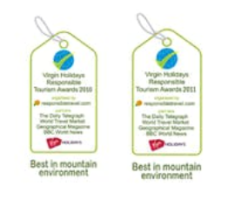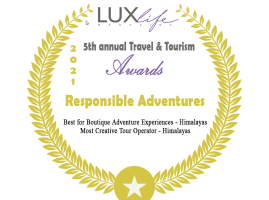Upper Dolpo Traverse – Juphal to Jomsom September/October 2017
The trek was finally confirmed after months of correspondence back and forth in August. We had our first ever Polish group consisting of 5 members.
Trekking Staff movement – Pre trek.
This trek is in the High and Wild part of Nepal and takes a lot of planning. I had been planning for weeks on end. Our staff, who spend most of summer monsoon trekking in Ladakh, got back five days, and Dil got into Kathmandu one night before leaving for Dunai, Dolpo district’s administrative centre. These poor lads had to take four days’ drive, changing four vehicles as there are no bridges over the swollen rivers, porter the gear and food to the other side, load it onto another transport, and continue their bumpy ride. After four days of the hot, sticky, rough, and sometimes bruising ride, they had to load the equipment and food on mules and continue their journey on foot for two days. They finally got the Dunai on the 6th day. They still had to sort out the rental tents and kitchen equipment and go shopping for fresh vegetables before we arrived.
Upper Dolpo Group movement
One group member pulled out due to compassionate reasons on the day she was to fly towards Nepal. One group member arrived via Delhi in the morning, while the rest arrived via Doha. Upon arrival at the hotel, the standard check-in, I arranged for the money changer to come to the reception area with local currency for the trekkers as part of our service. We parted ways after agreeing to meet the following evening for dinner and updates. They were left on their own as they all had been to Kathmandu at least twice before, and they knew their way around town.
We met for dinner at an agreed time, the trekkers got briefed on the program for the next day, and we flew to Nepalgunj in the afternoon. The flight to Nepalgunj got delayed by 30 minutes, but a brand new old ATR72-500 of Yeti Airlines made up for the lost time. The aircraft was filled with two big groups of medical/missionary volunteers to the Humla district. It was hectic trying to retrieve our luggage while being eaten alive by mosquitoes. The heat and the humidity didn’t help much. It was a relief to get to our hotel’s air-conditioning – Traveler’s Village, just a few kilometres from the airport. We retired early, as we had to get to the airport by 5.30 a.m. for our flight to Juphal. We collected our packed breakfasts, loaded the vehicle with our luggage, and headed for the airport. The airport was buzzing with activity. Upon checking in, I was informed that we had 74 kilograms of excess weight and had to pay RS150 per kg. Upon doing so, I joined the group after the security check, and the weather had worsened; it had started raining. We were informed that the flight was cancelled due to bad weather at Juphal. The airline crew we had booked our plane had a day off the next day, and they wouldn’t fly. I called up contacts to convince them to pass the next day or get seats on another airline but to no avail. We were fortunate to have understanding clients who said there was no need to get stressed out if the flights were not happening. We spent the next day touring around Nepalgunj; mind you, most locals we spoke to said not much to see here. We returned to the hotel in the afternoon after sending the morning in an electric vehicle.
Day 1
The following day we got into our aircraft, and in a short time, we landed at Juphal airport. We decided to walk part of the way until our vehicle met us on the trail; we walked to Dunai. We expected the weather to be much colder above 2000 meters, but it was still scorching. We were glad to be united with our team, who had been waiting for us and had a quick discussion to get moving that day after a quick lunch. Our group consisted of me as the trek leader, two trekking chefs, one trek butler, one local assistant, two pony men, and ten mules. We started along the Thulo Bheri River and turned northward an hour later along the Suligad River. We registered with the Shy Phoksundo National park at their entrance, the largest in Nepal. We got to Kageni just before dark as we had a late start to the day. Our crew and mules reached the campsite 30 minutes after we did, and they quickly set up the tents for the trekkers and made dinner within 90 minutes of our arrival.
Day 2
The following day we walked in a northwesterly direction going upstream of the Suligad river, which comes from Phoksundo Lake. The hike was in the beautiful forested area passing through Shyanta and Chepka until our final stop at Rechi. Our mules and support crew got delayed as one of our mules brushed against a rocky outcrop on the trail and fell into the Suligad River. Our pony men quickly jumped into the waist-deep river and pulled the mule out. The mule escaped with no injuries; its load, two tin boxes, was utterly smashed. Once again, they arrived just before dark, but like the previous night, our team was swift in preparing our dinner, and everyone went to bed content.

















